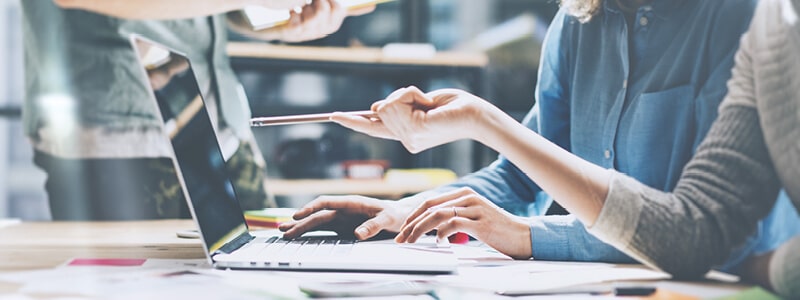
Why is design important?
It helps set a scene; guides us in the right direction; makes us more receptive to stories, content, messages and all channels of engagement.
The most successful design does this without us being completely conscious of it. Design is highly subjective, of course, but ultimately it’s about creating something that feels right. In events and exhibitions, design should never overpower or distract from the content or message; it should support and amplify. And it should make your brand more memorable, by adding depth, meaning and emotion.
Design plays a key role in the attendee experience, whether conscious or subconscious. And the role it plays is twofold.
1. Form
Have you ever walked into a room and immediately felt calm and relaxed? The atmosphere in a space, and the tangible emotions you feel on entering, are often down to the design of the environment itself. Our surroundings are proven to have an impact on our emotions, our well being, and our psychological and physical comfort.
While this is nothing new, that doesn’t mean that getting spaces and environments right is easy to perfect – particularly in the context of events and exhibitions where stands battle for attention, footfall is frenetic, and brands vie for floor space.
Great event design doesn’t just happen; getting it right is hard work. When you walk into a room or a space, it’s a combination of elements – space, light, form, composition and colour, all working together to generate the right feeling.
Good design is difficult to pinpoint for most; it is much easier to identify design that’s poorly executed. When you walk into a shop and immediately feel oppressed, design will probably be to blame. Poorly combined colours can make us feel agitated. A bad choice of furniture can cause unease and restlessness. These mistakes stand out, and they distract from what is really important.
Good design is subtle and clever. This is how the most successful products have enjoyed such long lifespans, some becoming timeless. In the world of exhibitions and events, that subtlety is important. We want your audience and visitors to feel the way you need them to feel and to engage with what you need them to engage with. Design should never distract, it should strengthen and intensify the experience.
2. Function
All designers are taught that form follows function – something beautiful that doesn’t work is still beautiful, but you’re left with a sour taste when it doesn’t do what it needs to do. This translates to events and exhibitions. An event designed by Ilse Crawford would no doubt be stunning, but if it was difficult to get a coffee, or a seat, guess what people will remember and talk about afterwards. She wouldn’t let that happen though, because she is brilliant at what she does.
An environment has to work as intended. It should be effortless. Nobody should be aware of whether it works or not. It just should. Function is an essential part of design.
How do we get it right?
Achieving the right design is a combination of process, collaboration and skill. It’s hugely important for us to truly understand our clients, their needs and their objectives before we even think about form or function. Through a process of questioning and empathising, we make sure we really get under the skin of what our clients need to achieve. It’s this collaborative approach which results in the best experiences for attendees, and it’s why the planning stage, before we consider aesthetics or floor plans, is a vital part of any event.
And it’s fun. Everyone enjoys this part of the process and we often find that what our clients really need from us is different to what they first had in their minds. It means that we and our clients are both clear on functional requirements and objectives from the start, allowing us to determine how a design should feel and why.
This structure and planning sets us all up to succeed, and means that our clients truly understand the creative process as it happens. They get to be involved, and at the end of it, when we have delivered successfully, we all can feel confident that we knew what success looked like from the beginning.
Every client is different, of course, and part of the thrill for us is getting to the core of why an event exists, and how great design and delivery can achieve brilliant results for our clients. Click here to see just a few of the clients we’ve helped.
Subscribe and stay up to date
receive essential emails.


